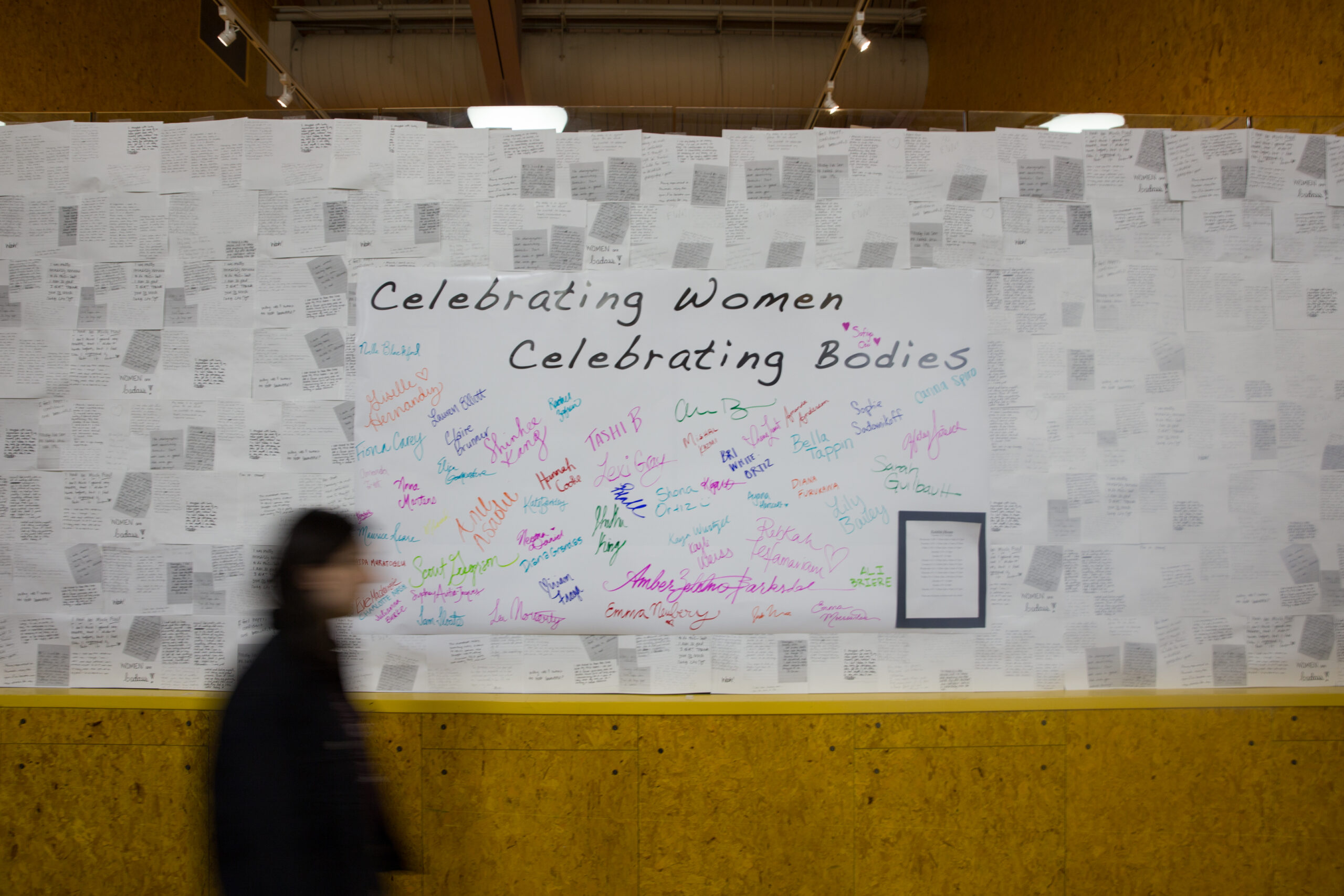‘Celebrating Women’ champions choice through photos
March 30, 2018
 Ann Basu
Ann BasuOver the next two weeks, the Lamarche Gallery in David Saul Smith Union will showcase photos of Bowdoin women as part of photoshoot and exhibit “Celebrating Bodies, Celebrating Women,” coordinated by the Sexuality, Women and Gender Center (SWAG). The project—holding a different significance for each participant—was designed to give women choice in self-expression.
“This is by women for women,” said Anu Asaolu ’19, one of the project’s four organizers. “It is something for themselves as opposed to, again, producing something that’s for the rest of the campus to see.”
This focus on agency—where participants were given say in all aspects of the shoot—was a paramount consideration for SWAG student directors Kendall Schutzer ’18, Scout Gregerson ’18, Rebkah Tesfamariam ’18 and Asaolu.
“The whole point of the project was about choice. Giving women the choice in how they want to represent their bodies and if they even want to participate at all,” said Gregerson.
From how much of their bodies they wanted to expose to the option to have their pictures shown in the exhibit, participants determined every step of the process.
“People could choose a photographer that they prefer[red] to work with. They could do it alone or do it with a group of friends. The photographers were really receptive to what your vision was,” said Julianna Burke ’18, who participated in the shoot.
“I think doing this was an exercise in how far I’ve come with my own relationship with my body,” said Burke. “It also made me realize how far I need to come in the way I think about my body.”
This amount of freedom made the event a rewarding experience for Louisa Izydorczak ’20, another participant.
“To have these photos of yourself to save and show other people, I think is really special and really empowering,” said Izydorczak.
In planning the event, the organizers made an effort to acknowledge the diversity of participants’ relationships with their bodies. They recognized that the title “Celebrating Women, Celebrating Bodies,” which dates from the first iteration of the event in 2010, might not reflect the experiences of all participants. For the women who participated, the shoot was a medium for self-representation, which, the directors noted, does not necessarily translate into an act of embracing or celebrating for everyone.
“For some people it can be really difficult and it can not be a celebration at all, and we just wanted to be mindful of that,” said Gregerson.
In light of the #MeToo movement, student directors believe that the exhibit provides a chance to continue an important conversation about the way women’s bodies are looked at and talked about.
“I see the #MeToo movement was a way for women to take ownership of themselves and their experience,” said Tesfamariam. “Similarly, I think that this photoshoot is making conversations about women taking ownership of their own bodies.”
Women often face challenges in controlling the representation of their bodies online and through social media. Organizers took extra precautions to protect the privacy of all participants.
“This was done completely without using the internet. Everything was password-protected to keep people’s images really secure and safe,” said Schutzer.
Directors also made an effort to ensure that the project remained as inclusive as possible despite the gendered title of the event.
“We were also really thoughtful about language and how we can make it inclusive to all women including trans women [and] also enable nonbinary folks who have a relationship to womanhood to participate,” said Schutzer. “I hope we did, but it is always a challenge.”
As evidenced by the written responses of participants on display outside the exhibit, the event elicited a range of reactions.
“Every woman came to this photoshoot and participated in it for their own reasons, and I hope that people ask questions,” said Tesfamariam. “I hope that people consider why this is important, that it’s not about sexualizing ourselves. I think it’s more about making a statement that we are people who are your friends and allies.”
The exhibit is open to people of all identities. Both Schutzer and Tesfamariam urge visitors to be mindful of their assumptions while viewing the photographs.
“I hope that they can see the joy that is in so many of the photos, particularly the photos of friendship,” said Schutzer. “I hope that they catch themselves in their initial thoughts and where they come from, and whether they are being judgmental or not.”
“Respect us,” said Tesfamariam. “Be our allies in all spaces, not just when it’s convenient to you. I think this is one of the best ways that … we can ask the Bowdoin community to wake up and really consider how they see women both as their peers and in public culture.”
“[The photographs are a] reminder that bodies are just bodies, but all bodies are beautiful,” added Schutzer. “I hope people go away thinking that.”
Jill Tian contributed to this report.

Comments
Before submitting a comment, please review our comment policy. Some key points from the policy: